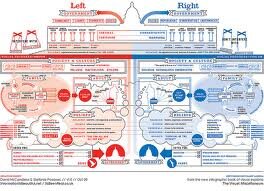 This entertaining review in PopMatters made me want to run out and buy the book.It tells how illustrator and graphic designer Seymour Chwast condensed Dante’s epic 14,000-line allegory to under 120 pages, producing an accessible visual adaptation, complete with diagrams to explain the intricate circles and steps in the author's imagined world. The approach is quirky and playful, while still capturing the spirit of Dante's daunting prose.This is neither a dumbed-down, Reader's Digest treatment nor a substitute for reading the 14th century classic. Rather, consider it a wayfinding guide to the real thing.
This entertaining review in PopMatters made me want to run out and buy the book.It tells how illustrator and graphic designer Seymour Chwast condensed Dante’s epic 14,000-line allegory to under 120 pages, producing an accessible visual adaptation, complete with diagrams to explain the intricate circles and steps in the author's imagined world. The approach is quirky and playful, while still capturing the spirit of Dante's daunting prose.This is neither a dumbed-down, Reader's Digest treatment nor a substitute for reading the 14th century classic. Rather, consider it a wayfinding guide to the real thing.
"Film noir, Marc Chagall and children’s picture books are among the sources which inform Chwast’s art, drawn in pure black and white, which presents Dante as a trench-coated, pipe-smoking private investigator, Virgil as a proper old-school English gentleman with a bowler hat and cane and Beatrice as a blonde, pin-curled beauty...""This is a true adaptation, not a translation, and one in which the graphics do more of the storytelling than the text. Chwast’s illustrations carry the main content of the Divine Comedy while the cantos have been greatly shorted and translated into modern prose." -- Sarah Boslaugh
Read the full review here:'Dante's Divine Comedy,' from a Left-Handed DesignerFor more insight into the creative process, in Chwast's own words, see this from Huffington Post: Divine Comedy as Graphic Novel





 When you’re working hard to make a deadline on little sleep, how do you keep the creative juices flowing (and tired clichés at bay?)When you channel all the creativity you can muster into a big project for a client, how do you find the bandwidth to dabble in anything artistic on your own? At the end of a long day, do you find a quiet corner to sketch, paint or write poetry? Or do you watch Rockford Files reruns?
When you’re working hard to make a deadline on little sleep, how do you keep the creative juices flowing (and tired clichés at bay?)When you channel all the creativity you can muster into a big project for a client, how do you find the bandwidth to dabble in anything artistic on your own? At the end of a long day, do you find a quiet corner to sketch, paint or write poetry? Or do you watch Rockford Files reruns? 